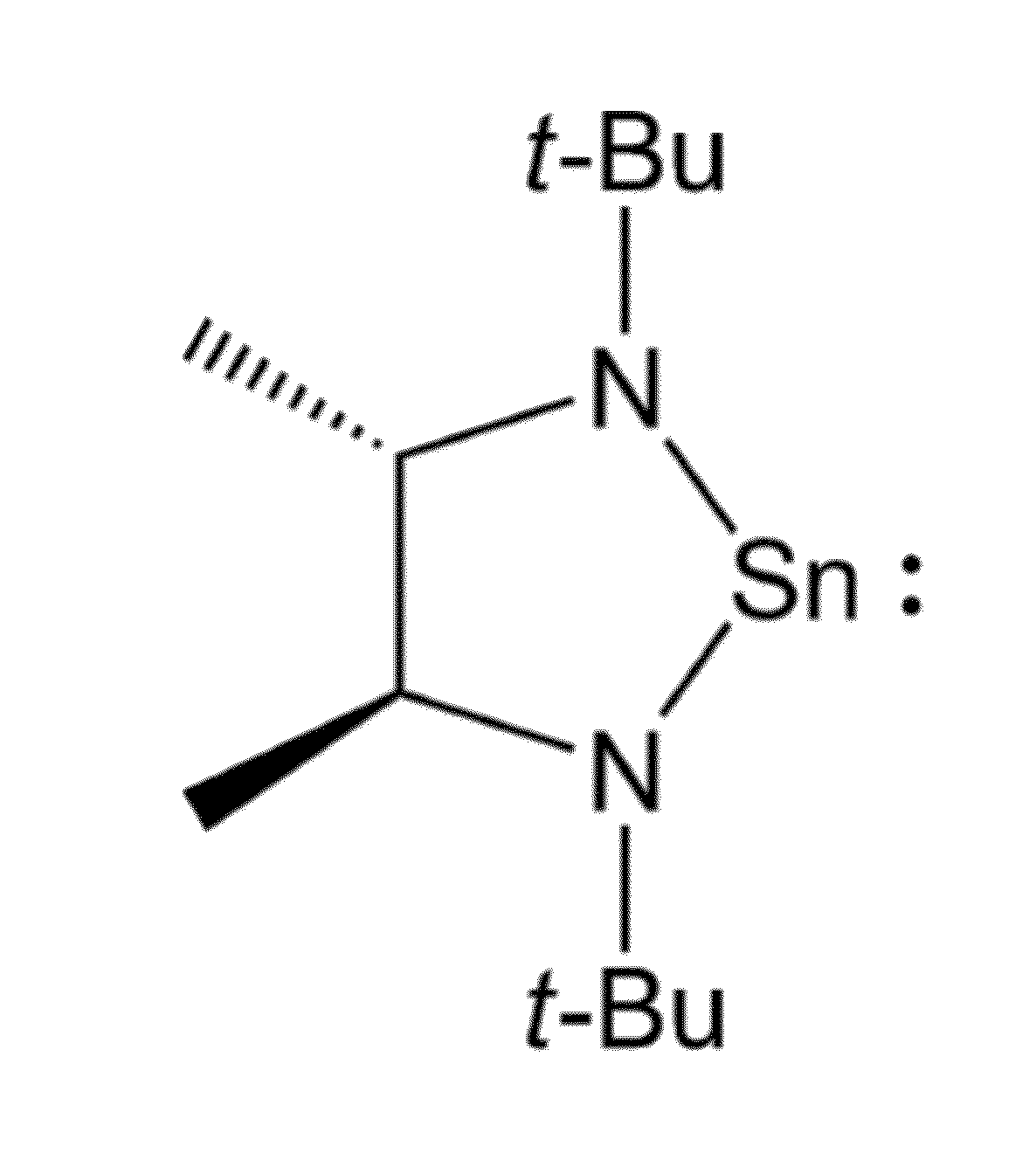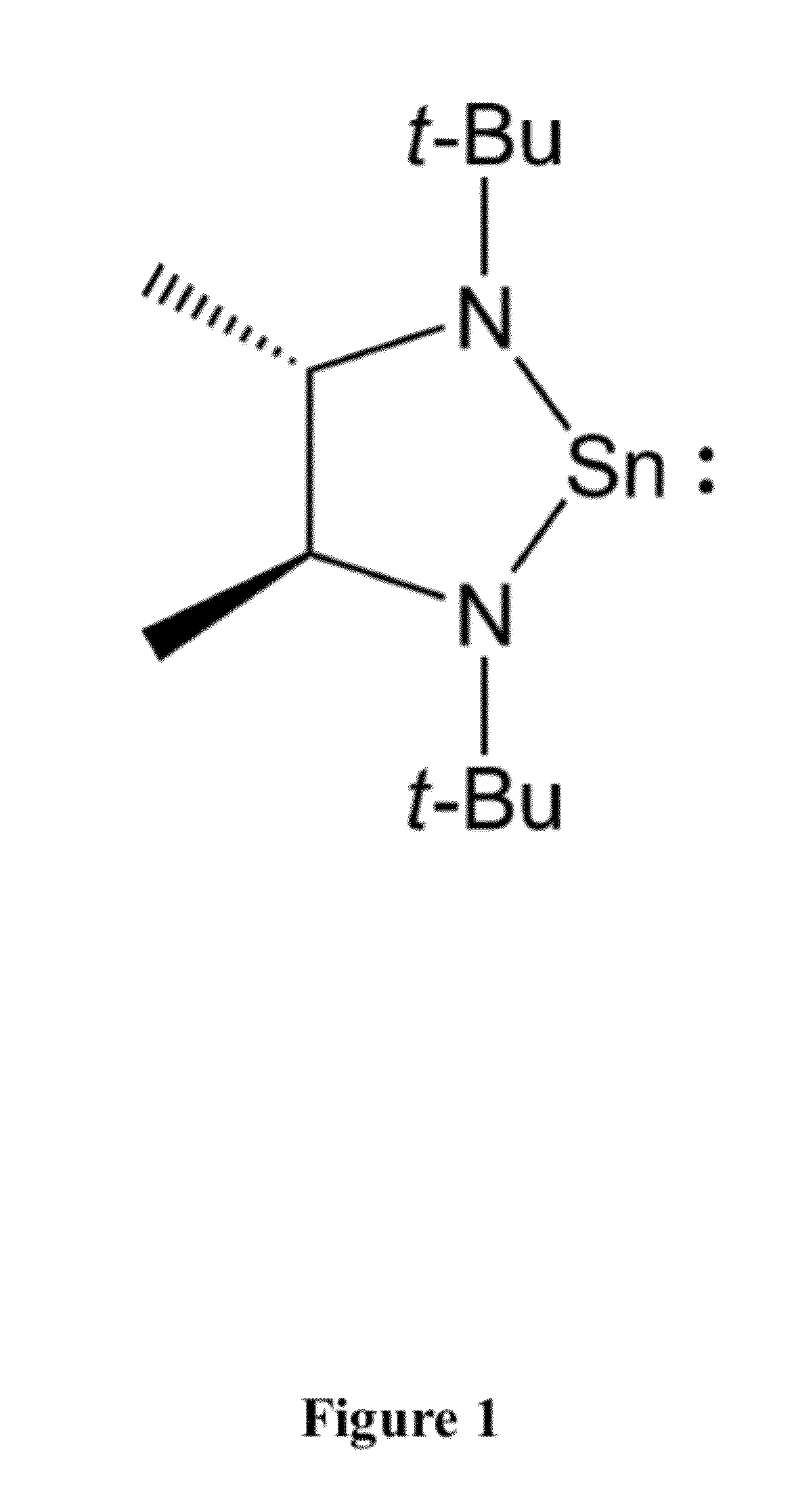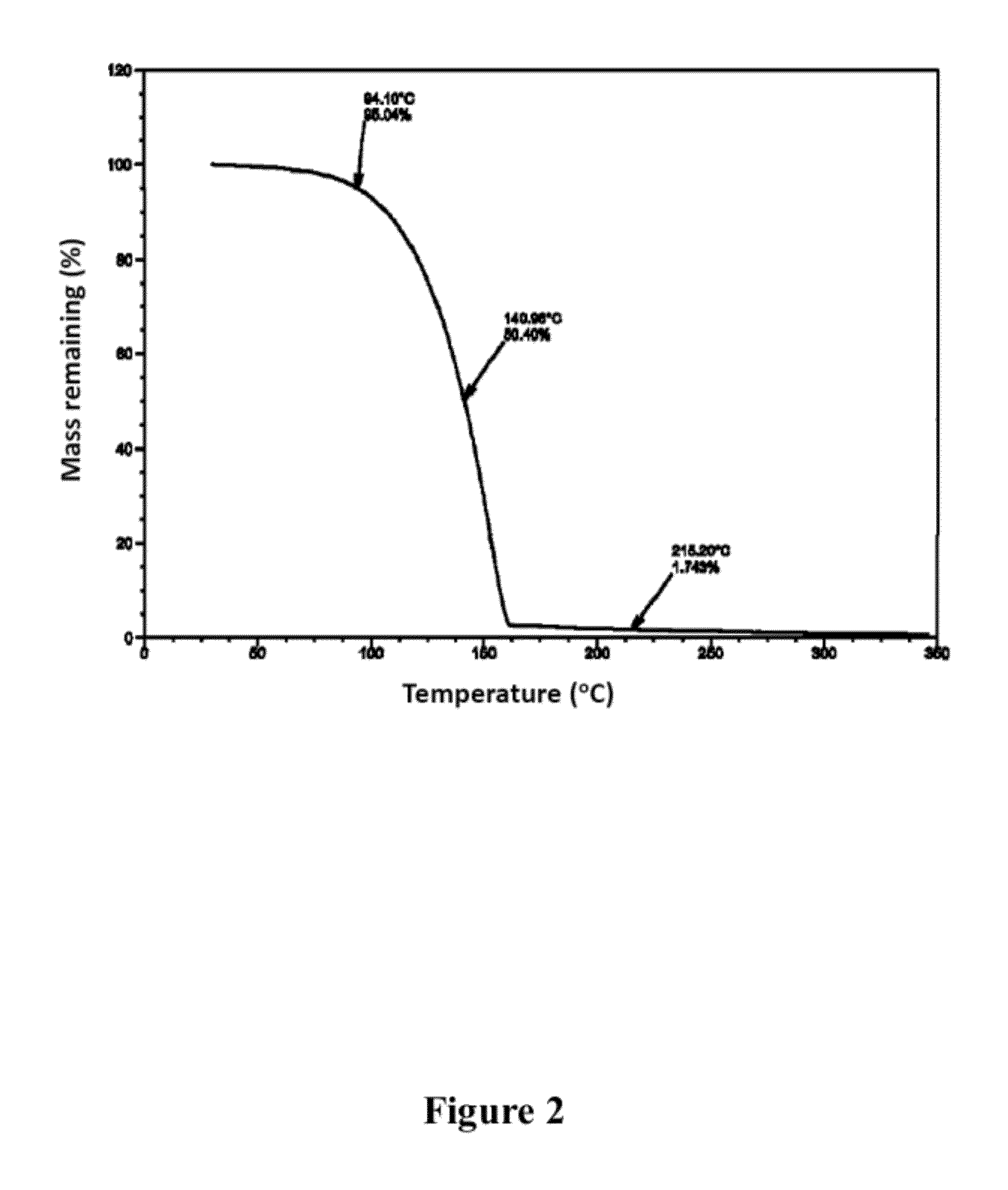Cyclic metal amides and vapor deposition using them
a technology of metal amides and amides, applied in the field of film deposition, can solve the problems of high growth temperature, corrode deposition equipment, contamination of films with chloride impurities, etc., and achieve the effect of high electrical conductivity
- Summary
- Abstract
- Description
- Claims
- Application Information
AI Technical Summary
Benefits of technology
Problems solved by technology
Method used
Image
Examples
example 1
Synthesis of Tin Compound of Formula 2
[0078]To 50 ml (0.80 mol, 1.6 M in ether) of methyl lithium in 250 ml of cold (−30° C.) ether was added 6.73 g (40 mmol) of 2,2,7,7-tetramethyl-3,6-diaza-3,5-octadiene in several portions (some heat evolution) and the mixture was stirred at room temperature for ca. 1.5 hours. This solution was recooled to −30° C. and SnCl2 (7.58 g, 40 mmol) was added in portions with vigorous stirring. The mixture was allowed to warm to room temperature and filtered. The solvent was removed in vacuo. Analytically pure material may be obtained by crystallization from concentrated pentane solutions at −30° C. or by sublimation (60° C., ˜0.03 mmHg) onto a −78° C. cold finger. Yield 6.85 g (54%) of a yellow solid. 1H NMR (C6D6, 400 MHz): δ 3.32 (q, JC—H 6.0 Hz, 2H, CHMe), 1.25 (s, 18, CMe3), 1.19 (d, JC—H 6.0 Hz, 6H, backbone Me). 13C NMR (C6D6, 100 MHz): δ64.476, 56.075, 34.208, 28.714. Anal. Calc for C12H26N2Sn: C, 45.46; H, 8.27; N, 8.84. Found: C, 45.35, 45.32; ...
example 2
No Deposition of Tin Oxide without any Oxygen Source
[0100]Example 2 was repeated using only the tin precursor, and no hydrogen peroxide vapor. No film was observed to have been deposited on the substrate surface. This result verifies that the film deposition in example 2 was due to the ALD reaction.
example 3
Slow Deposition of Tin Oxide
[0101]Example 2 was repeated using only de-ionized water as an oxidant gas instead of 50 wt. % H2O2 while maintaining the other growth conditions. Under these conditions, a sharp decrease in the growth rate (to 0.016 nm / cycle) was observed. The difference in the growth rate between 50 wt. % H2O2 and water as oxidant gas was over ten times.
[0102]This result indicates that the higher growth rate with the use of 50% hydrogen peroxide as an oxidant gas resulted from the higher reactivity of the synthesized tin precursor to hydrogen peroxide than to water. This result further demonstrates that the growth kinetics of the tin oxide can be controlled as desired by controlling the relative ratio of hydrogen peroxide to water as desired.
PUM
| Property | Measurement | Unit |
|---|---|---|
| band gap | aaaaa | aaaaa |
| root-mean-square roughness | aaaaa | aaaaa |
| thick | aaaaa | aaaaa |
Abstract
Description
Claims
Application Information
 Login to View More
Login to View More - R&D
- Intellectual Property
- Life Sciences
- Materials
- Tech Scout
- Unparalleled Data Quality
- Higher Quality Content
- 60% Fewer Hallucinations
Browse by: Latest US Patents, China's latest patents, Technical Efficacy Thesaurus, Application Domain, Technology Topic, Popular Technical Reports.
© 2025 PatSnap. All rights reserved.Legal|Privacy policy|Modern Slavery Act Transparency Statement|Sitemap|About US| Contact US: help@patsnap.com



